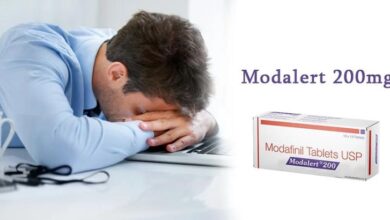Am I Depressed or Just Sad? Signs You Shouldn’t Ignore

In life, everyone has depressing moments. It’s a normal reaction to hardships, tragedies, or disappointments. But depression entails more than melancholy. It’s a severe mental illness that has an impact on a person’s feelings, thoughts, and daily functioning. Recognizing whether to seek treatment requires an understanding of the distinction between melancholy and depression. The differences between the two are examined in this article along with tips for spotting them.
Sadness: What Is It?
Sadness is a fundamental human feeling. depressed-or-just-sad We experience it when we go through difficult times or encounter unpleasant circumstances, such losing a loved one, being rejected, or failing. It’s transient and normally goes away when things get better or more time passes. You might experience sadness, for instance, if you lose an exam or argue with a buddy. For a while, you might cry, get angry, or stop doing things with other people, but ultimately the grief goes away.
Although the depth and duration of sadness can vary, it never takes over your life. There are times when you can feel happy or satisfied even when you’re depressed. Moreover, sadness usually goes away on its own without the need for medical attention. Actually, experiencing depressive episodes can be a normal part of the emotional process, enabling people to think, process, and develop.
How can depression manifest itself?
On the other hand, depression is a mental health condition that can be diagnosed and goes beyond passing feelings. The hallmarks of Major Depressive Disorder (MDD), often known as clinical depression, are enduring melancholy and hopelessness as well as a loss of interest in once-enjoyed activities. Not merely a fleeting emotion, depression is a condition that can last for weeks, months, or even years and severely hinders day-to-day functioning.
Depression symptoms consist of:
Persistent emptiness or sadness being really depressed for no obvious reason.
Loss of interest in or enjoyment from hobbies Interests, connections, or employment that once provided happiness are no longer enjoyable.
A substantial weight gain or loss, or variations in appetite unrelated to dieting, are examples of appetite and weight alterations.
Sleep disruptions: Oversleeping or insomnia.
Tiredness or lack of energy: Experiencing fatigue despite getting a full night’s sleep.
Sensationalized self-criticism or persistent remorse over seemingly insignificant things can be signs of worthlessness or guilt.
Inability to concentrate Problems paying attention, making choices, or recalling details.
Physical symptoms include gastrointestinal issues, headaches, and other inexplicable aches and pains.
Death or suicide thoughts Persistent thoughts of desiring to pass away or preparing to try suicide.
Whereas melancholy is frequently associated with certain occasions, depression can occur for no apparent reason. Even in circumstances that one would normally find upbeat, there can be an overwhelming, unwavering weight that keeps one from experiencing joy in life.
Crucial Distinctions Between Depression and Sadness
Time Frame and Widespreadness
How long the feelings last is the main distinction between depression and sadness. The typical duration of sadness is a few days or a few weeks. In contrast, the symptoms of depression are enduring, typically lasting considerably longer than two weeks. Severity Depression can exist even in situations that would normally be happy; it doesn’t only come and go with circumstances.
Although it rarely takes over a person’s capacity to function, sadness can be extremely powerful. When depression strikes, the intensity of symptoms can be crippling, making it hard to function in daily life, keep a job, maintain relationships, or even get out of bed in the morning.
Effect on Day-to-Day Living
While sadness can temporarily sap your motivation, it usually has no bearing on your ability to function at work, socialize with friends, or take care of your obligations. Conversely, depression has the potential to seriously disrupt a person’s life. Because of their intense feelings of hopelessness, people with depression may avoid social situations, find it difficult to concentrate at work, or ignore their personal hygiene.
Physical Indications
Even though sadness might make you feel depressed, depression frequently presents as physical symptoms like headaches, stomach problems, or persistent exhaustion. These symptoms are connected to a depressive state of mind rather than being the outcome of any particular sickness.
Loss of hope and guilt
Even if it hurts, sadness often gives rise to optimism. Even if you’re depressed, you still have hope for a better future. But hopelessness and helplessness are common symptoms of depression. It can exacerbate their distress when people with depression believe that nothing will get better or that they are to blame for their problems.
Suicidal Ideation
Thoughts of suicide or death are rarely the result of sadness alone. However, these kinds of beliefs are frequently linked to depression. Suicidal thoughts are actually a typical symptom of depression and a clear indication that you need to get help from a professional.
Knowing whether to Get Help It’s critical to discern whether mild depression has turned into a more serious condition. Consulting a mental health expert is essential if you or someone you love is exhibiting signs of depression. The following are some clues that it might be time to get assistance:
The depressing feeling persists. Depression may be indicated if depressive symptoms last longer than two weeks.
functioning with difficulty. It’s a warning sign if your mood is interfering with your ability to carry out daily tasks, whether at work or at home.
suicidal or fatal thoughts. It is crucial that you get treatment right away from a mental health professional or a crisis hotline if you are considering hurting yourself or taking your own life.
decline in life’s passions. Depression may be indicated if you no longer find pleasure in activities you formerly enjoyed and feel unconnected to life.
bodily signs and symptoms. When physical discomfort or tiredness are signs of emotional pain, there might be a deeper issue at hand than just grief.
How to Handle Depression and Sadness
Easy self-care techniques can help improve your mood if you’re depressed. These could be journaling, exercising, spending time with loved ones, participating in enjoyable hobbies, or practicing mindfulness. As a natural feeling, sadness usually passes with time and care for your emotional needs.
However, therapy is frequently required for depression. This could involve medication, counseling (such as cognitive-behavioral therapy), or modifications to lifestyle that promote mental health. A treatment plan can be more individualized for you if you work with a mental health specialist. Furthermore, establishing a network of friends, family, and medical professionals can be quite helpful in the healing process.
In conclusion
Although they may initially appear to be similar, sadness and depression are not the same. While sadness is a common, transient reaction to life’s hardships, depression is a mental illness that has to be attended to and treated. You can determine whether you’re experiencing sadness or something more serious by being aware of the important distinctions, which include duration, severity, and impact on daily life.
Seek assistance from a mental health professional if you believe you may be depressed. Depression is a treatable illness, and you can recover if you get the correct support. You don’t have to travel this path alone; asking for assistance is a sign of strength, not weakness.





